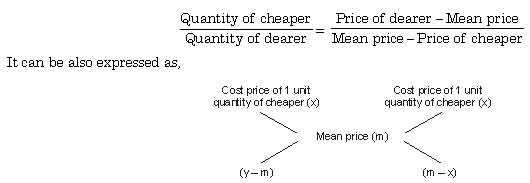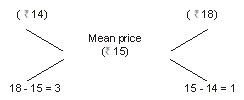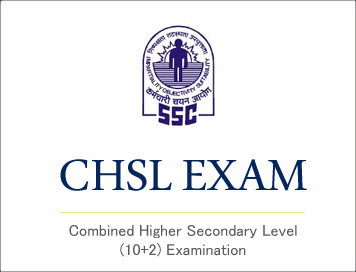(Guidance Programme) Combined Higher Secondary Level [CHSL] (10+2) Exam : Mixture
(Guidance Programme) Combined Higher Secondary Level [CHSL] (10+2) Exam : Mixture
Introduction
It is the rule that is used to determine the mean value of the mixture when
the prices of the individual items being mixed together and the proportion in
which they are being mixed are given. Here, the value of the mixture is always
higher than the lowest value and lower than the higher value of the items being
mixed.
According to the Rule of Alligation

=>(Cheaper quantity : Dearer quantity) = (y – m) : (m – x)
Where, mean price (m) is the cost price of a unit quantity of the mixture.
Also, if a container contains x units of liquid from which y units are taken out
and replaced by water.
After n operations, the quantity of pure liquid is
Example 1: How many kilograms of rice costing Rs.18 per kg must be mixed with 30 kg of rice costing Rs.14 per kg, so that the resultant mixture cost Rs.15 per kg.
Solution. Applying the rule of alligation, we have


If cheaper rice is 3 kg, dearer rice is 1 kg.
If cheaper rice is 30 kg, dearer rice=


